Kelly Jensen's Blog, page 101
October 15, 2014
Kid Lit Con 2014, Sacramento: The Recap

Last week, I headed out to Sacramento to attend the 8th annual Kid Lit Con. It was my fifth time going, which is hard for me to wrap my head around. I got out to Sacramento mid-day on Thursday after what felt like a never-ending flight (it was a completely fine flight, just long) and spent two full days attending sessions, catching up with long-time blogging friends, and meeting new people.

Pictured above are the view from my hotel room (on the left), which looked out over a park and Sacramento's City Hall. On the far left of the picture is the Sacramento Public Library, which is where the event was held. The photo on the right is from the lobby of the hotel, which had a vintage library feel to it. It ran both sides of the lobby and onto the second floor.
This was the first year that Kid Lit Con had a theme, which was diversity. Most of the sessions focused on some aspect of diversity, from how to be conscious of portrayals of diversity in what you're reading to why an author would want to have as diverse a cast of characters in her novel as possible.
Friday, the first full day of sessions, the first program I attended was about finding and reviewing the best in diverse kid lit. The speakers were good, and they shared a couple of blogs I hadn't been aware of before. For the most part, it was a session about why blogging about diversity and diverse books is important.
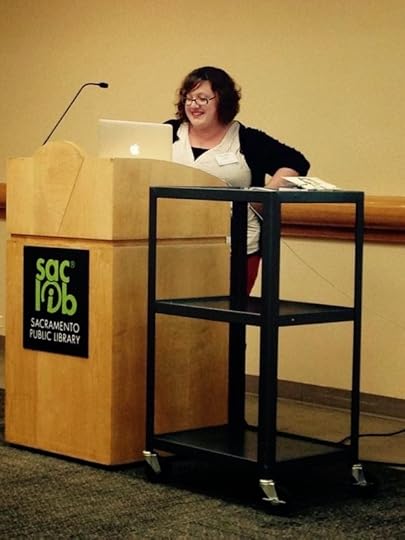 Immediately following that session was my own presentation on using social media effectively. Here's the Prezi for those who couldn't attend or who did attend and wanted a copy of it. A couple of questions that aren't addressed on the Prezi itself: to turn on Twitter Analytics, go to analytics.twitter.com, and you can see them there. I mentioned you'd have to go to ads.twitter.com to see them, which is true, but it looks like they're not in the Analytics dashboard itself. The thing people were most interested in during the session was my plug for Diptic, an image collage app/program you can get for $1. I highly recommend spending that single dollar, since it'll let you create collages, as well as put text overlays onto those collages. The image I pulled with the Facebook section on the Prezi was one I made with Diptic. I also spent a bit of time talking about how to use Tumblr to re-promote backlist posts you've made, in order to take what you already have and make it new again. I think the rest of the Prezi is self-explanatory, but if anyone reading this wants more information or has questions, let me know and I'm happy to answer. Photo on the left is courtesy of Melissa Fox.
Immediately following that session was my own presentation on using social media effectively. Here's the Prezi for those who couldn't attend or who did attend and wanted a copy of it. A couple of questions that aren't addressed on the Prezi itself: to turn on Twitter Analytics, go to analytics.twitter.com, and you can see them there. I mentioned you'd have to go to ads.twitter.com to see them, which is true, but it looks like they're not in the Analytics dashboard itself. The thing people were most interested in during the session was my plug for Diptic, an image collage app/program you can get for $1. I highly recommend spending that single dollar, since it'll let you create collages, as well as put text overlays onto those collages. The image I pulled with the Facebook section on the Prezi was one I made with Diptic. I also spent a bit of time talking about how to use Tumblr to re-promote backlist posts you've made, in order to take what you already have and make it new again. I think the rest of the Prezi is self-explanatory, but if anyone reading this wants more information or has questions, let me know and I'm happy to answer. Photo on the left is courtesy of Melissa Fox.  I had a great lunch with a pile of long-time blogging friends, and then attended a session with Hannah Gomez, Jewell Parker Rhodes, and Edith Campbell called "Getting Beyond Diversity and Getting to the Story." I loved how energetic a speaker Jewell was, and it was maybe this session from which I took the most away. Hannah talked about how, when she went through the roster of Kid Lit Con attendee blogs, she noticed three types of bloggers: bloggers who talk about a wide variety of topics and books are just part of their blog; bloggers who are "greeters" of sorts and who post short reviews and participate in memes on a really regular basis and who tend to keep things short; and finally, bloggers who are more analytical and tend to write longer posts, with less frequent reviews. I thought about this breakdown all weekend and think it really impacted how I took in some of the other sessions. Not in a bad way, though.
I had a great lunch with a pile of long-time blogging friends, and then attended a session with Hannah Gomez, Jewell Parker Rhodes, and Edith Campbell called "Getting Beyond Diversity and Getting to the Story." I loved how energetic a speaker Jewell was, and it was maybe this session from which I took the most away. Hannah talked about how, when she went through the roster of Kid Lit Con attendee blogs, she noticed three types of bloggers: bloggers who talk about a wide variety of topics and books are just part of their blog; bloggers who are "greeters" of sorts and who post short reviews and participate in memes on a really regular basis and who tend to keep things short; and finally, bloggers who are more analytical and tend to write longer posts, with less frequent reviews. I thought about this breakdown all weekend and think it really impacted how I took in some of the other sessions. Not in a bad way, though.When that session wrapped up, there was an author meet-and-greet. I don't know how many authors were there, but it was a nice number. I spent part of the event talking with Stephanie Kuehn, and I convinced her to join everyone for dinner afterward.
Everyone at Kid Lit Con went out to dinner that night, then because of some inconsistent dessert service, I went out with Leila Roy, Hannah Gomez, and Faythe Arrendondo for dessert and drinks at the hotel restaurant.
Saturday began early, as I met with Hannah and Faythe to talk about our presentation later that afternoon. We had a solid breakfast, and we talked a bit about what we hoped to accomplish, and then we spent a good amount of time talking about how excited we were to meet and present with our fourth panelist, Summer Khaleq.
The first session on Saturday was the keynote with Mitali Perkins. She was a great speaker, and she offered up a 10-point checklist for seeing and thinking about diversity, race, and culture in kid lit. I thought that was one of the best take aways from the event.
Pam Margolis was the second speaker of the day, and she talked about how to reach readers in a very digital environment, beyond your blog. I loved Pam's style and enthusiasm in presenting, but a lot of what she'd suggested is stuff I probably wouldn't do, though I appreciate when other people do them. During her session, I kept thinking about Hannah's blogger breakdown, and Pam really hit it hard for the first two types of bloggers, especially those who are eager to take pictures, to be bookstagramers, who want to hop on YouTube, and who are excited about using tools like Vine. While I enjoy bloggers who do that -- and I do! -- I'm not the type and I don't think I would ever be. Part is discomfort, part of not having patience with technology, but the biggest part is that for me, blogging is about writing. It's an outlet TO write, so playing with YouTube or Instagram for blogging/book related purposes doesn't suit my needs. And what's great is...it's okay. This session made me further appreciate those bloggers who do do those things, since there is time, effort, and bravery in putting yourself out there like that.
Shannon Hale was the second keynote of the day, and she Skyped in. She talked about why she writes diverse characters, and at one point, she got so choked up about seeing the type of girl she'd hoped she'd depicted in her book, that I almost got a little choked up myself.
I skipped out on lunch Saturday since I'd been hit by jet lag bad and wanted to be fresh for the second half of the day. The session I'd been looking forward to the most was next, which was the #WeNeedDiverseBooks panel, featuring S. E. Sinkhorn, Mike Jung, Karen Sandler, and Martha White. They talked about how the campaign came together, the projects they'd worked on so far, and what was in the works. We got a sneak peek at the now-live diverse YA reading flowchart, which you can see, print, and share here. The session was great, and I was really excited to meet both Mike and Stephanie after their panel. I've been reading and following them both for a while now, and it's always nice when you get to put a face in person to a name.
 Photo by Guinevere Thomas
Photo by Guinevere ThomasThe very final session of Kid Lit Con was the panel I was a part of, along with Faythe, Summer, and Hannah. Faythe and Hannah are both librarians, and Summer, second from the left, is a 16-year-old YA reader who is so thoughtful and articulate. It was an honor to be on a panel with all three of these ladies. We called ourselves the downer panel, since our session was far less about making people feel good and more about putting to action the things we'd talked about all day. We talked in depth about how diversity is more than race or culture -- it includes body image, socioeconomic status, and more. We talked about how you have to call things out when they're being done poorly and how you should point to examples where things are being done well. Since it's hard to summarize what a panel discussion talked about in depth, it's probably more useful to offer up the downloadable brochure than Hannah created for our panel about how to read and blog diversely. Looking for diverse blogs to add to your reading diet? You're going to find them there.
When our session wrapped up, it was on to a banquet dinner at the hotel. It was a nice time for decompressing and catching up with friends, old and new. I didn't stay the entire four hours, since I had a very early flight to catch.
 While I wish there had been more talk of actual blogging at Kid Lit Con this year, I appreciated how diverse the diversity discussion ran throughout the two days. More, as Hannah noted, it was nice to be at a small conference where diversity was well-represented among attendees, too. It was amazing to look out at a crowd while presenting and see people of all different colors, shapes, and backgrounds. That doesn't happen as much as it should at bigger conventions like ALA or BEA. It was nice to meet new people, as well as reconnect with old ones. Spending three nights with Leila was a blast as always, and it was really nice to be on the same page with our jet lag and exhaustion by the end of the weekend.
While I wish there had been more talk of actual blogging at Kid Lit Con this year, I appreciated how diverse the diversity discussion ran throughout the two days. More, as Hannah noted, it was nice to be at a small conference where diversity was well-represented among attendees, too. It was amazing to look out at a crowd while presenting and see people of all different colors, shapes, and backgrounds. That doesn't happen as much as it should at bigger conventions like ALA or BEA. It was nice to meet new people, as well as reconnect with old ones. Spending three nights with Leila was a blast as always, and it was really nice to be on the same page with our jet lag and exhaustion by the end of the weekend. Next year, Kid Lit Con hits Baltimore, and I'm already looking forward to it. A huge thank you to the coordinators of this year's program -- it was well-run and really enjoyable.







 Related StoriesOn Girls, Girl Reading, and Girls in YA Fiction Beyond STACKEDA Whirlwind Trip to PLA 2014, "About the Girls," + Other MusingsALA 2013 Chicago: A Recap
Related StoriesOn Girls, Girl Reading, and Girls in YA Fiction Beyond STACKEDA Whirlwind Trip to PLA 2014, "About the Girls," + Other MusingsALA 2013 Chicago: A Recap
Published on October 15, 2014 22:00
October 14, 2014
Plagues & Epidemics
I've noticed a lot of plagues and epidemics in YA fiction lately. It used to be that a plague was a good way to explain a decimated world in a YA post-apocalyptic story, but more frequently now I'm seeing stories that tackle the plague during its rise and dominance rather than its lingering after-effects. This includes some historical fiction about the 1918 Spanish flu pandemic, which can evoke the same sort of mood as post-apocalyptic tales set in a fictional future. To many who lived through it, the 1918 flu may have felt like the end of the world.
Below are a few titles published within the last few years that feature plagues or epidemics prominently. I tried to focus on stories where the plague is the plot rather than simply exposition. Are there any that I've missed?
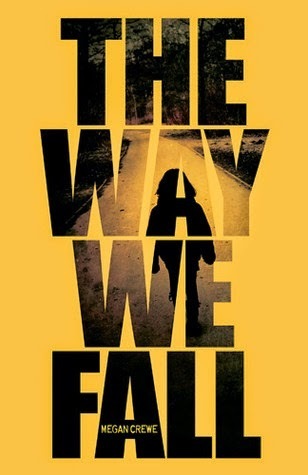
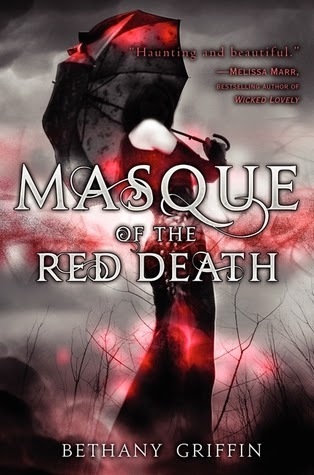
The Way We Fall by Megan Crewe
Sixteen-year-old old Kaelyn challenges her fears, finds a second chance at love, and fights to keep her family and friends safe as a deadly new virus devastates her island community. | Sequels: The Lives We Lost, The Worlds We Make
Masque of the Red Death by Bethany Griffin
In this twist on Edgar Allen Poe's gothic short story, a wealthy teenaged girl who can afford a special mask to protect her from the plague that decimated humanity in the mid-1800s, falls in love, becomes caught up in a conspiracy to overthrow an oppressive government, and faces the threat of a new plague. | Sequel: Dance of the Red Death
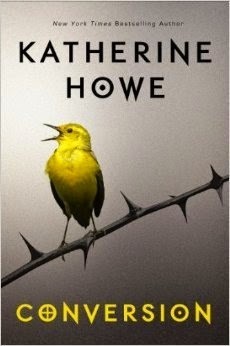
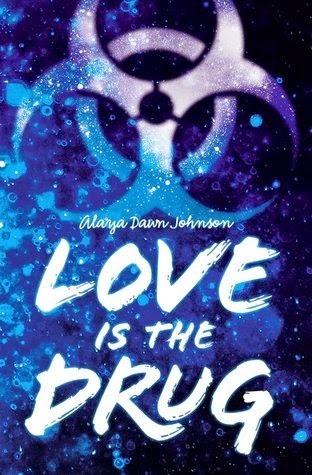
Conversion by Katherine Howe
When girls start experiencing strange tics and other mysterious symptoms at Colleen's high school, her small town of Danvers, Massachusetts, falls victim to rumors that lead to full-blown panic, and only Colleen connects their fate to the ill-fated Salem Village, where another group of girls suffered from a similarly bizarre epidemic three centuries ago. | Kimberly's review
Love is the Drug by Alaya Dawn Johnson
A chance meeting with Roosevelt David, a homeland security agent, at a party for Washington DC's elite leads to Emily Bird waking up in a hospital, days later, with no memory of the end of the night. Meanwhile, the world has fallen apart: A deadly flu virus is sweeping the nation, forcing quarantines, curfews, even martial law. And Roosevelt is certain that Bird knows something. Something about the virus--something about her parents' top secret scientific work--something she shouldn't know.
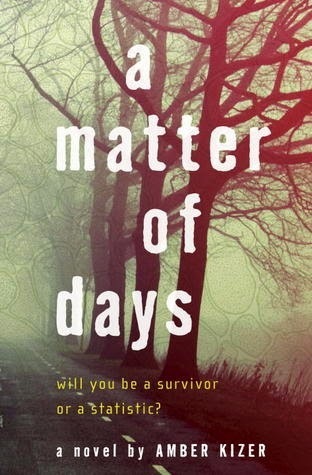
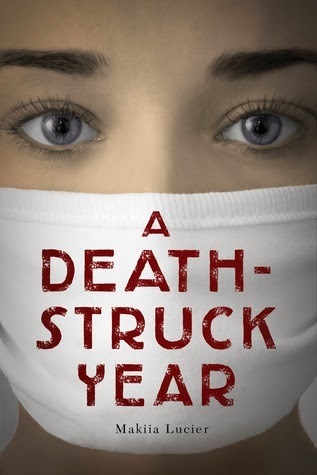
A Matter of Days by Amber Kizer
In the not-too-distant future when a global pandemic kills most of humanity, a teenaged girl and her younger brother struggle to survive. | Kimberly's review
A Death-Struck Year by Makiia Lucier
When the Spanish influenza epidemic reaches Portland, Oregon, in 1918, seventeen-year-old Cleo leaves behind the comfort of her boarding school to work for the Red Cross.
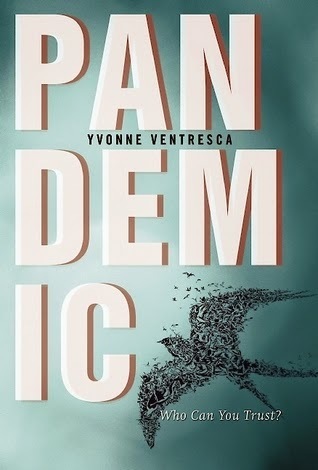
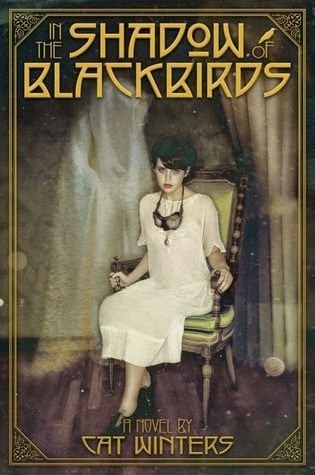
Pandemic by Yvonne Ventresca
Lil is left home alone when a deadly pandemic hits her small town in New Jersey. Will Lil survive the flu and brave her darkest fears?
In the Shadow of Blackbirds by Cat Winters
In San Diego in 1918, as deadly influenza and World War I take their toll, sixteen-year-old Mary Shelley Black watches desperate mourners flock to séances and spirit photographers for comfort and, despite her scientific leanings, must consider if ghosts are real when her first love, killed in battle, returns. | Kimberly's review
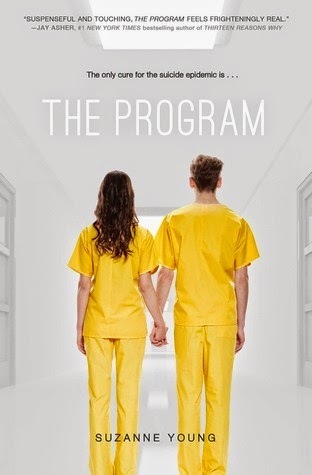
The Program by Suzanne Young
When suicide becomes a worldwide epidemic, the only known cure is The Program, a treatment in which painful memories are erased, a fate worse than death to seventeen-year-old Sloane who knows that The Program will steal memories of her dead brother and boyfriend. | Sequel: The Treatment | Dual review







 Related StoriesThe Death Business in YA Fiction: A (Short) Reading ListA Few Cybils ReadsIn Real Life by Cory Doctorow and Jen Wang + 3 Questions with Cory
Related StoriesThe Death Business in YA Fiction: A (Short) Reading ListA Few Cybils ReadsIn Real Life by Cory Doctorow and Jen Wang + 3 Questions with Cory
Below are a few titles published within the last few years that feature plagues or epidemics prominently. I tried to focus on stories where the plague is the plot rather than simply exposition. Are there any that I've missed?


The Way We Fall by Megan Crewe
Sixteen-year-old old Kaelyn challenges her fears, finds a second chance at love, and fights to keep her family and friends safe as a deadly new virus devastates her island community. | Sequels: The Lives We Lost, The Worlds We Make
Masque of the Red Death by Bethany Griffin
In this twist on Edgar Allen Poe's gothic short story, a wealthy teenaged girl who can afford a special mask to protect her from the plague that decimated humanity in the mid-1800s, falls in love, becomes caught up in a conspiracy to overthrow an oppressive government, and faces the threat of a new plague. | Sequel: Dance of the Red Death


Conversion by Katherine Howe
When girls start experiencing strange tics and other mysterious symptoms at Colleen's high school, her small town of Danvers, Massachusetts, falls victim to rumors that lead to full-blown panic, and only Colleen connects their fate to the ill-fated Salem Village, where another group of girls suffered from a similarly bizarre epidemic three centuries ago. | Kimberly's review
Love is the Drug by Alaya Dawn Johnson
A chance meeting with Roosevelt David, a homeland security agent, at a party for Washington DC's elite leads to Emily Bird waking up in a hospital, days later, with no memory of the end of the night. Meanwhile, the world has fallen apart: A deadly flu virus is sweeping the nation, forcing quarantines, curfews, even martial law. And Roosevelt is certain that Bird knows something. Something about the virus--something about her parents' top secret scientific work--something she shouldn't know.


A Matter of Days by Amber Kizer
In the not-too-distant future when a global pandemic kills most of humanity, a teenaged girl and her younger brother struggle to survive. | Kimberly's review
A Death-Struck Year by Makiia Lucier
When the Spanish influenza epidemic reaches Portland, Oregon, in 1918, seventeen-year-old Cleo leaves behind the comfort of her boarding school to work for the Red Cross.


Pandemic by Yvonne Ventresca
Lil is left home alone when a deadly pandemic hits her small town in New Jersey. Will Lil survive the flu and brave her darkest fears?
In the Shadow of Blackbirds by Cat Winters
In San Diego in 1918, as deadly influenza and World War I take their toll, sixteen-year-old Mary Shelley Black watches desperate mourners flock to séances and spirit photographers for comfort and, despite her scientific leanings, must consider if ghosts are real when her first love, killed in battle, returns. | Kimberly's review

The Program by Suzanne Young
When suicide becomes a worldwide epidemic, the only known cure is The Program, a treatment in which painful memories are erased, a fate worse than death to seventeen-year-old Sloane who knows that The Program will steal memories of her dead brother and boyfriend. | Sequel: The Treatment | Dual review







 Related StoriesThe Death Business in YA Fiction: A (Short) Reading ListA Few Cybils ReadsIn Real Life by Cory Doctorow and Jen Wang + 3 Questions with Cory
Related StoriesThe Death Business in YA Fiction: A (Short) Reading ListA Few Cybils ReadsIn Real Life by Cory Doctorow and Jen Wang + 3 Questions with Cory
Published on October 14, 2014 22:00
October 13, 2014
A Few Cybils Reads
Cybils nominations close tomorrow (have you nominated your favorite YA SFF yet?), and all Round 1 panelists, including myself, are deep into their reading. Here are a few recent reads.
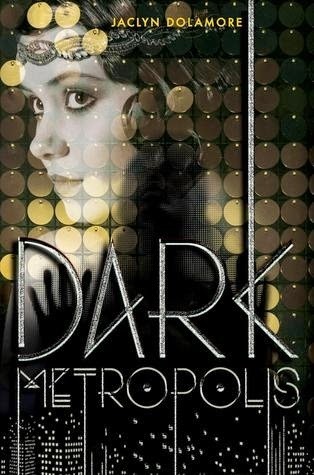 Dark Metropolis
by Jaclyn Dolamore
Dark Metropolis
by Jaclyn Dolamore
I started off my Cybils reading with this atmospheric novel inspired by Fritz Lang’s 1927 silent film Metropolis. I don’t know much about the film – aside from the fact that it exists – so I went into the book pretty blind. Happily, I really enjoyed it. It’s told from the third person perspective of three different teens: Thea, a girl who works at a cocktail bar whose father died in the war and whose mother suffers from “bound sickness” due to her husband’s death; Nan, a co-worker of Thea’s who wakes up one day in an underground prison where she’s forced to do menial work for no pay; and Freddy, who has the ability to bring people back from the dead.
The three teens’ stories intertwine, coalescing to tell a story about a massive conspiracy featuring forced labor, dark magic, and the beginnings of a revolution. The plot is quite complex, and the shifting perspectives help to illuminate it piece by piece, making for an engaging read. The place and time of the story is never specified, but it feels a little 1920s, post- World War I-ish. (Dolamore has stated on Goodreads that she intended it to be 1927 Germany, which fits.) This is a moody, creative story that would be a good fit for fantasy readers looking for something a little different.
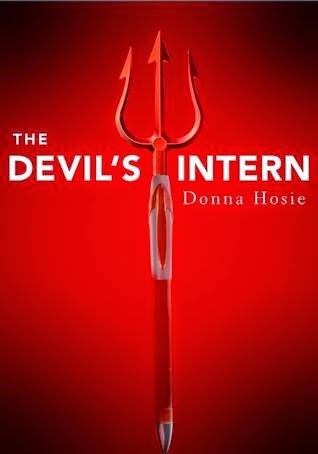 The Devil’s Intern
by Donna Hosie
The Devil’s Intern
by Donna Hosie
Mitchell was hit by a bus and now he’s dead. As luck would have it, he’s ended up in Hell, and he’s landed the prestigious position of intern to the Devil with a capital D (not to be confused with the lower-case devils as all other denizens of Hell are called). He spends his time hanging out with his three best friends – all teenagers who died in different eras of history, including a Viking warrior – and trying his best to please his immediate boss, Septimus, and avoid the Big Boss, the Devil. Things really get going when Mitchell learns that Septimus has a device that will take the user out of Hell and fling him – plus any tagalongs – to any point in history. Naturally, Mitchell decides to use the device to prevent his death. He initially tries to do it alone, but his friends insist on coming along.
This is a time travel story and it makes great use of the device. The reader visits each of Mitchell’s friends’ lives, at the point of their deaths, and it’s here that Hosie shows what a great plotter she is. It reminded me a little bit of the time travel in Prisoner of Azkaban. The tone is different, but the philosophy behind the time travel is the same. We even get a scene that calls to mind Harry saving himself from the dementors – though the end result is very different.
This is a really enjoyable, funny, and often moving read – just don’t think about the premise too hard.
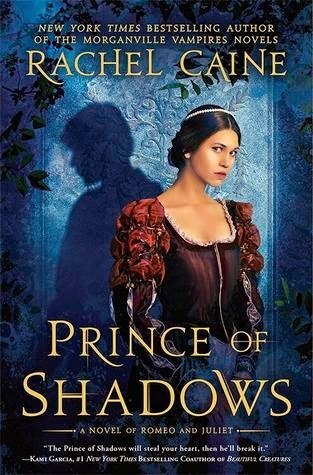 Prince of Shadows
by Rachel Caine
Prince of Shadows
by Rachel Caine
In her latest, Rachel Caine leaves modern vampires behind and instead tackles Shakespeare’s Verona. This is a re-telling of Romeo and Juliet from Benvolio’s point of view, though Caine does make some major adjustments to the original story. Benvolio is the titular Prince of Shadows, called such because he wears a disguise and robs the wealthy residents of Verona at night, stealing from them for the thrill of it – and occasionally for revenge.
Benvolio’s two best friends are Romeo and Mercutio. Romeo is just as insipid as Shakespeare wrote him to be, but his feelings for Juliet are the result of a curse rather than youthful foolishness. The biggest change to Shakespeare’s story is Mercutio, who is gay in Caine’s re-telling, a fact which propels much of the story’s conflict. It’s a wise change that adds a lot of emotional depth to the story. Benvolio himself pines after Rosaline (as Romeo does at the beginning), but that relationship is pretty underdeveloped. Rosaline doesn’t actually get a lot of page time. The book is at its most successful when it explores the thorny friendship between Benvolio, Romeo, and Mercutio. A bit of magic near the end makes this a fantasy story, though it’s fairly light. Caine incorporates some of Shakespeare’s dialogue in an unobtrusive way that feels natural. The story is a bit overlong but a worthwhile read for fans of classics retold.






 Related StoriesThe Death Business in YA Fiction: A (Short) Reading ListIn Real Life by Cory Doctorow and Jen Wang + 3 Questions with CoryAudio Review: Cleopatra's Moon by Vicky Alvear Shecter
Related StoriesThe Death Business in YA Fiction: A (Short) Reading ListIn Real Life by Cory Doctorow and Jen Wang + 3 Questions with CoryAudio Review: Cleopatra's Moon by Vicky Alvear Shecter
 Dark Metropolis
by Jaclyn Dolamore
Dark Metropolis
by Jaclyn Dolamore I started off my Cybils reading with this atmospheric novel inspired by Fritz Lang’s 1927 silent film Metropolis. I don’t know much about the film – aside from the fact that it exists – so I went into the book pretty blind. Happily, I really enjoyed it. It’s told from the third person perspective of three different teens: Thea, a girl who works at a cocktail bar whose father died in the war and whose mother suffers from “bound sickness” due to her husband’s death; Nan, a co-worker of Thea’s who wakes up one day in an underground prison where she’s forced to do menial work for no pay; and Freddy, who has the ability to bring people back from the dead.
The three teens’ stories intertwine, coalescing to tell a story about a massive conspiracy featuring forced labor, dark magic, and the beginnings of a revolution. The plot is quite complex, and the shifting perspectives help to illuminate it piece by piece, making for an engaging read. The place and time of the story is never specified, but it feels a little 1920s, post- World War I-ish. (Dolamore has stated on Goodreads that she intended it to be 1927 Germany, which fits.) This is a moody, creative story that would be a good fit for fantasy readers looking for something a little different.
 The Devil’s Intern
by Donna Hosie
The Devil’s Intern
by Donna Hosie Mitchell was hit by a bus and now he’s dead. As luck would have it, he’s ended up in Hell, and he’s landed the prestigious position of intern to the Devil with a capital D (not to be confused with the lower-case devils as all other denizens of Hell are called). He spends his time hanging out with his three best friends – all teenagers who died in different eras of history, including a Viking warrior – and trying his best to please his immediate boss, Septimus, and avoid the Big Boss, the Devil. Things really get going when Mitchell learns that Septimus has a device that will take the user out of Hell and fling him – plus any tagalongs – to any point in history. Naturally, Mitchell decides to use the device to prevent his death. He initially tries to do it alone, but his friends insist on coming along.
This is a time travel story and it makes great use of the device. The reader visits each of Mitchell’s friends’ lives, at the point of their deaths, and it’s here that Hosie shows what a great plotter she is. It reminded me a little bit of the time travel in Prisoner of Azkaban. The tone is different, but the philosophy behind the time travel is the same. We even get a scene that calls to mind Harry saving himself from the dementors – though the end result is very different.
This is a really enjoyable, funny, and often moving read – just don’t think about the premise too hard.
 Prince of Shadows
by Rachel Caine
Prince of Shadows
by Rachel Caine In her latest, Rachel Caine leaves modern vampires behind and instead tackles Shakespeare’s Verona. This is a re-telling of Romeo and Juliet from Benvolio’s point of view, though Caine does make some major adjustments to the original story. Benvolio is the titular Prince of Shadows, called such because he wears a disguise and robs the wealthy residents of Verona at night, stealing from them for the thrill of it – and occasionally for revenge.
Benvolio’s two best friends are Romeo and Mercutio. Romeo is just as insipid as Shakespeare wrote him to be, but his feelings for Juliet are the result of a curse rather than youthful foolishness. The biggest change to Shakespeare’s story is Mercutio, who is gay in Caine’s re-telling, a fact which propels much of the story’s conflict. It’s a wise change that adds a lot of emotional depth to the story. Benvolio himself pines after Rosaline (as Romeo does at the beginning), but that relationship is pretty underdeveloped. Rosaline doesn’t actually get a lot of page time. The book is at its most successful when it explores the thorny friendship between Benvolio, Romeo, and Mercutio. A bit of magic near the end makes this a fantasy story, though it’s fairly light. Caine incorporates some of Shakespeare’s dialogue in an unobtrusive way that feels natural. The story is a bit overlong but a worthwhile read for fans of classics retold.







 Related StoriesThe Death Business in YA Fiction: A (Short) Reading ListIn Real Life by Cory Doctorow and Jen Wang + 3 Questions with CoryAudio Review: Cleopatra's Moon by Vicky Alvear Shecter
Related StoriesThe Death Business in YA Fiction: A (Short) Reading ListIn Real Life by Cory Doctorow and Jen Wang + 3 Questions with CoryAudio Review: Cleopatra's Moon by Vicky Alvear Shecter
Published on October 13, 2014 22:00
October 12, 2014
The Death Business in YA Fiction: A (Short) Reading List
An interesting micro-trend I've noticed in the last few publisher catalogs I've read for forthcoming titles is the death business. We're talking teens who are working in graveyards, at the morgue, or elsewhere within the funeral business. This isn't a new topic, but it's one I've seen creeping in more regularly. I won't lie: it fascinates me. I love the idea of stories where teens face death but in a way that's more on their own terms and in a space within the industry because it gives a different perspective on grief, on loss, and on life more broadly. The teens tend to be less in-the-moment because the losses they're seeing or thinking about aren't necessarily personal to them, but yet, they're impacted by them by virtue of it being part of their work.
These stories are quite realistic, too. In small towns, especially, the death business is often a family business. It isn't strange to have teens growing up in a home that is attached to the funeral parlor (and that's something I'd love so much to read about -- think about how you make friends or how holidays like Halloween must be or what you do when there's a memorial going on downstairs and you have a date over -- there are a lot of possibilities here). I'm less interested in horror, supernatural, or paranormal tales set in graveyards, though those are good, too. I'm more interested in the teen who is digging the graves.
Here's a look at YA that explore some aspect of the death business. It's a small list, but it's an interesting one. All descriptions are from WorldCat, unless otherwise noted. And please, other titles that fit the theme are welcome, so tell me about them.
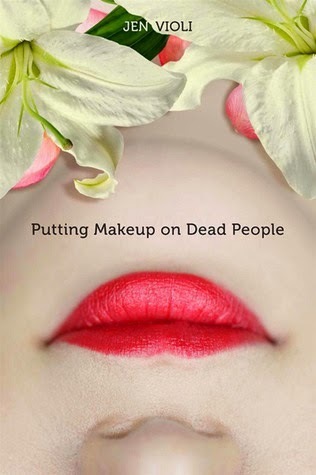
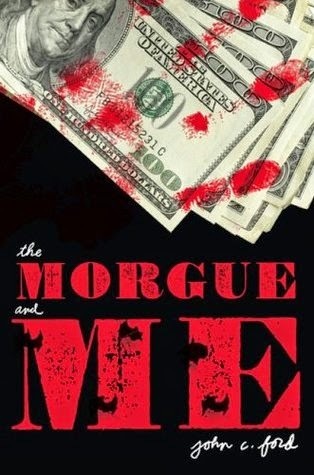
Putting Makeup on Dead People by Jen Violi: Donna's discovery, that she wants to be a mortician, helps her come into her own and finally understand that moving forward doesn't mean forgetting someone you love.
The Morgue and Me by John C. Ford: Eighteen-year-old Christopher, who plans to be a spy, learns of a murder cover-up through his summer job as a morgue assistant and teams up with Tina, a gorgeous newspaper reporter, to investigate, despite great danger.
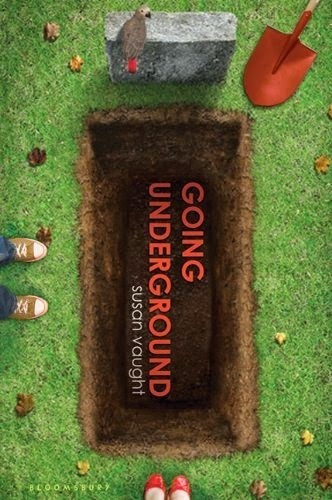
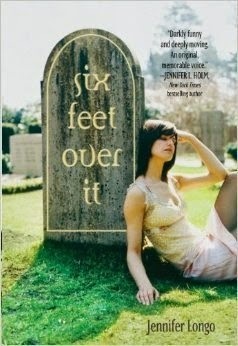
Going Underground by Susan Vaught: Interest in a new girl and pressure from his parole officer cause seventeen-year-old Del, a gravedigger, to recall and face the "sexting" incident three years earlier that transformed him from a straight-A student-athlete into a social outcast and felon.
Six Feet Over It by Jennifer Longo: When fourteen-year-old Leigh's father buys a graveyard and insists she work there after school, she learns much about life, death, and the power of friendship.


The Dead I Know by Scot Gardner (March 3, 2015): Aaron Rowe walks in his sleep. He has dreams he can't explain, and memories he can't recover. Death doesn't scare him - his new job with a funeral director may even be his salvation. But if he doesn't discover the truth about his hidden past soon, he may fall asleep one night and never wake up.
The Boy in the Black Suit by Jason Reynolds (January 6, 2015): Matt wears a black suit every day. No, not because his mom died—although she did, and it sucks. But he wears the suit for his gig at the local funeral home, which pays way better than the Cluck Bucket, and he needs the income since his dad can’t handle the bills (or anything, really) on his own. So while Dad’s snagging bottles of whiskey, Matt’s snagging fifteen bucks an hour. Not bad. But everything else? Not good. Then Matt meets Lovey. She’s got a crazy name, and she’s been through more crazy than he can imagine. Yet Lovey never cries. She’s tough. Really tough. Tough in the way Matt wishes he could be. Which is maybe why he’s drawn to her, and definitely why he can’t seem to shake her. Because there’s nothing more hopeful than finding a person who understands your loneliness—and who can maybe even help take it away. (Description via Edelweiss)






 Related StoriesHispanic Heritage Month: A YA Reading ListIn Real Life by Cory Doctorow and Jen Wang + 3 Questions with CoryAudio Review: Cleopatra's Moon by Vicky Alvear Shecter
Related StoriesHispanic Heritage Month: A YA Reading ListIn Real Life by Cory Doctorow and Jen Wang + 3 Questions with CoryAudio Review: Cleopatra's Moon by Vicky Alvear Shecter
These stories are quite realistic, too. In small towns, especially, the death business is often a family business. It isn't strange to have teens growing up in a home that is attached to the funeral parlor (and that's something I'd love so much to read about -- think about how you make friends or how holidays like Halloween must be or what you do when there's a memorial going on downstairs and you have a date over -- there are a lot of possibilities here). I'm less interested in horror, supernatural, or paranormal tales set in graveyards, though those are good, too. I'm more interested in the teen who is digging the graves.
Here's a look at YA that explore some aspect of the death business. It's a small list, but it's an interesting one. All descriptions are from WorldCat, unless otherwise noted. And please, other titles that fit the theme are welcome, so tell me about them.


Putting Makeup on Dead People by Jen Violi: Donna's discovery, that she wants to be a mortician, helps her come into her own and finally understand that moving forward doesn't mean forgetting someone you love.
The Morgue and Me by John C. Ford: Eighteen-year-old Christopher, who plans to be a spy, learns of a murder cover-up through his summer job as a morgue assistant and teams up with Tina, a gorgeous newspaper reporter, to investigate, despite great danger.


Going Underground by Susan Vaught: Interest in a new girl and pressure from his parole officer cause seventeen-year-old Del, a gravedigger, to recall and face the "sexting" incident three years earlier that transformed him from a straight-A student-athlete into a social outcast and felon.
Six Feet Over It by Jennifer Longo: When fourteen-year-old Leigh's father buys a graveyard and insists she work there after school, she learns much about life, death, and the power of friendship.


The Dead I Know by Scot Gardner (March 3, 2015): Aaron Rowe walks in his sleep. He has dreams he can't explain, and memories he can't recover. Death doesn't scare him - his new job with a funeral director may even be his salvation. But if he doesn't discover the truth about his hidden past soon, he may fall asleep one night and never wake up.
The Boy in the Black Suit by Jason Reynolds (January 6, 2015): Matt wears a black suit every day. No, not because his mom died—although she did, and it sucks. But he wears the suit for his gig at the local funeral home, which pays way better than the Cluck Bucket, and he needs the income since his dad can’t handle the bills (or anything, really) on his own. So while Dad’s snagging bottles of whiskey, Matt’s snagging fifteen bucks an hour. Not bad. But everything else? Not good. Then Matt meets Lovey. She’s got a crazy name, and she’s been through more crazy than he can imagine. Yet Lovey never cries. She’s tough. Really tough. Tough in the way Matt wishes he could be. Which is maybe why he’s drawn to her, and definitely why he can’t seem to shake her. Because there’s nothing more hopeful than finding a person who understands your loneliness—and who can maybe even help take it away. (Description via Edelweiss)







 Related StoriesHispanic Heritage Month: A YA Reading ListIn Real Life by Cory Doctorow and Jen Wang + 3 Questions with CoryAudio Review: Cleopatra's Moon by Vicky Alvear Shecter
Related StoriesHispanic Heritage Month: A YA Reading ListIn Real Life by Cory Doctorow and Jen Wang + 3 Questions with CoryAudio Review: Cleopatra's Moon by Vicky Alvear Shecter
Published on October 12, 2014 22:00
October 9, 2014
This Week at Book Riot . . .
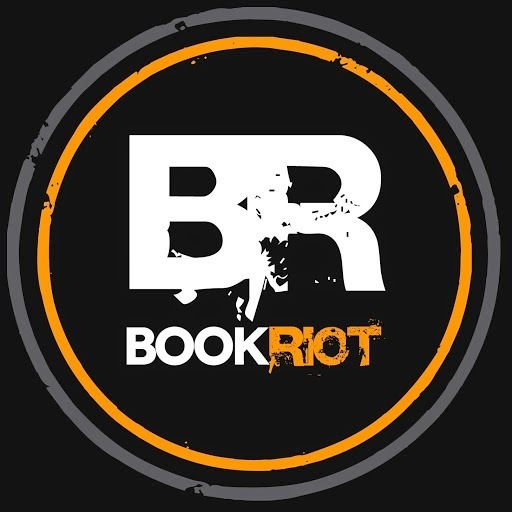
A quieter week at Book Riot, since I have been preparing to head out of town for KidLit Con. I have a pile of ideas up my sleeve for when I get back to make up for it.
The 3 On A YA Theme post for this week is 3 books to read if you're a fan of the television show Supernatural. The day after I'd put it into the queue, I saw a lovely flowchart from the Pickerington Public Library looking at books for fans of the show, and I added that to the comments. Check that out, too.







 Related StoriesThis Week at Book RiotThis Week At Book Riot
Related StoriesThis Week at Book RiotThis Week At Book Riot
Published on October 09, 2014 22:00
October 8, 2014
In Real Life by Cory Doctorow and Jen Wang + 3 Questions with Cory
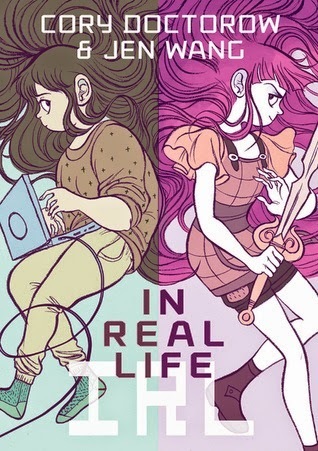 Cory Doctorow is known for exploring big social issues within his fiction for young adults, and his latest, the YA graphic novel In Real Life, is no different.
Cory Doctorow is known for exploring big social issues within his fiction for young adults, and his latest, the YA graphic novel In Real Life, is no different.When Anda's class has a female gamer come in and speak to them, Anda becomes fascinated with the idea of playing the game about which the guest spoke: Coarsegold Online. It's a massive multiplayer roleplaying game, and it's an opportunity for her to be a hero and it's a place where she gets the opportunity to meet new people and make friends from around the world.
Gold farmers are exceptionally controversial in the game, as they are people who illegally collect valuable objects within the game, then sell them off to players in rich countries who can afford to purchase them. This, of course, gives those who are rich a mega advantage at the game. It's an industry and an occupation, gold farming, but things get challenging when Anda befriends a gold farmer, who happens to be a poor boy from China. Suddenly, what seemed like a black-and-white/right-or-wrong situation with gold farming becomes a lot more complicated, as her friend's life depends upon making money doing this job.
Doctorow's story is complex and complicated, and while I think his introduction does a great job of offering an explanation for why what happens in the story isn't just about the in-game world, I found myself needing to flip back more than once to better understand what was happening and what the gravity of the situation was. Part of this is being a non-gamer -- and perhaps I'd have grasped some of these things better were this a world in which I was familiar -- but part of it was that at times, the message overpowered the story and the development of Anda.
The story, being about how people buy and sell levels and powers in-world and how others want to rid the game world of the people who are in the business of helping others cheat for the right price, parallels the non-gaming world in terms of how people climb the ladder and how they can cheat social systems and structures in place for the right price. But beneath that, and what I think was harder to come across because of the graphic novel format, are the really human reasons and aspects behind why someone would want to work a job that's purpose is to buck the system for others. We're only ever privy to Anda's perspective here, and, as noted, it's one of privilege. That's not a problem of her telling the story, but it's a bigger problem of the overall impact of the story. She almost grew too quickly, and because of the privilege she has in her own life, she was able to pursue solutions that carried the story's message almost too conveniently. There were other things that happened in the story that felt convenient or almost strange and difficult to believe, including small things like a gaming expert coming into a high school classroom and recruiting teens for her game, which includes a monthly fee.
That said, I still liked In Real Life, and a big reason for liking it was how wonderful Jen Wang's art is throughout. This is a lushly illustrated work, and I give Wang major kudos for how Anda was rendered. This is a fat girl, and she was never once ashamed of being so. Her body is depicted realistically, and I can see so many girls seeing themselves in her. While there was one part of the story that made me cringe when it came to the dialog of body shaming, it was easy enough to let go because of how Anda carried herself. In many ways, that slip fit the bigger issues of this book being imperfect about how it depicted and explored social and political issues in the real, rather than virtual, world. This is a full-color graphic novel with an appealing color palate. I'm going to keep an eye on Wang because I hope to see a lot more from her.
In Real Life should appeal to teen graphic novel enthusiasts, and I especially think teen gamers will find a lot to enjoy here -- and I think maybe more importantly, they'll find a lot worth talking about and debating. This could make for a really solid book discussion title. This is a time-relevant title, but it doesn't run the risk of becoming the kind of book that will become time-sensitive. What Doctorow did in Little Brother for the last generation of teens, he does here with In Real Life, serving up a meaty topic in a form that doesn't talk down to its readers but encourages them to think, discuss, and act. This would be a great book to pair with Steve Brezenoff's Guy In Real Life, which also delves into social issues through gaming -- both virtual and real-world.
**

In addition to talking about the book today, I was able to ask Cory a few questions about the book and some of the bigger issues broached in the story. Rather than talk about these within the review, I thought taking them straight to the source would be more interesting. I highly recommend checking out the other blogs who are taking part in asking Doctorow questions about In Real Life, and you can get the full list of other participants here. These might make discussing this book with teens even more interesting!
What capacity do you believe gaming has for educating people about social/political challenges throughout the world?
I think that games are an art form, and that art does lots of stuff, including education. But the primary thing that art does is make you feel irreducible, numinous aesthetic effects. Some games, like some art, can teach you just about anything, but that’s not what games are for.
It would be impossible to ignore the hostility that the gaming world has toward women. Yet, gaming has the capacity to be a tool of social mobility and change. How can girls and women navigate this disconnect? I wish I knew. My wife is a retired professional gamer -- she played Quake for England -- and through her I know a huge circle of hardcore, badass gamers and gaming professionals. Gender-based hatred and harrassment in games is an epiphenomenon of wider social factors, obviously. It’s not like women get a great deal everywhere *except* games -- and while ending games-based harassment (by making it socially unacceptable to admit or evince misogyny as it is in many other circles) would be a huge accomplishment, it would still leave the underlying problem intact.
Your books, including IN REAL LIFE, focus on teens making a difference. Why teens? What is it about teenagers that you believe will cause social and political change? I think we start out with well-developed senses of justice and fairness -- you see it in daycare classes -- but circumstances cause us to compromise a little at a time. Each compromise resets your vision of a “normal” level of fairness, so the next compromise is only perceived as a small variance on normal, as opposed to a deeper cut into justice.
Teenagers exist at the intersection of uncompromising justice and the capacity to act on it -- old enough to do stuff, young enough not to be convinced that nothing can be done.







 Related StoriesAudio Review: Cleopatra's Moon by Vicky Alvear ShecterThe Crossover by Kwame AlexanderAudio Review: Prisoner of Night and Fog by Anne Blankman
Related StoriesAudio Review: Cleopatra's Moon by Vicky Alvear ShecterThe Crossover by Kwame AlexanderAudio Review: Prisoner of Night and Fog by Anne Blankman
Published on October 08, 2014 22:00
October 7, 2014
Audio Review: Cleopatra's Moon by Vicky Alvear Shecter
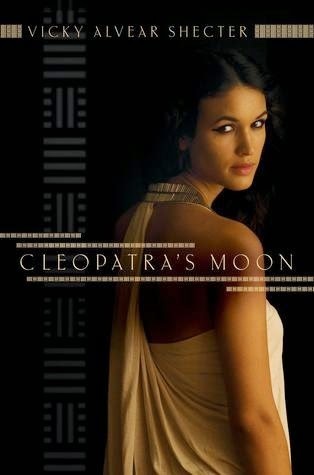 Though the title may lead some readers to think it,
Cleopatra's Moon
is not, in fact, about Cleopatra VII, the most well-known Cleopatra of history who was famously portrayed by Elizabeth Taylor. Instead, it's about her daughter, Cleopatra Selene, whose name is not nearly as well-known. In fact, in her author interview at the end of the book, Shecter mentions that many people didn't even realize Cleopatra had a daughter - the romanticized stories aren't particularly interested in Cleopatra's children.
Though the title may lead some readers to think it,
Cleopatra's Moon
is not, in fact, about Cleopatra VII, the most well-known Cleopatra of history who was famously portrayed by Elizabeth Taylor. Instead, it's about her daughter, Cleopatra Selene, whose name is not nearly as well-known. In fact, in her author interview at the end of the book, Shecter mentions that many people didn't even realize Cleopatra had a daughter - the romanticized stories aren't particularly interested in Cleopatra's children."Selene" means "moon" in ancient Greek, hence the title. Cleopatra Selene had a twin brother named Alexandros Helios; the second part of his name comes from the ancient Greek word for sun. People with names like these cry out for a story.
Unlike most YA novels, this one starts off with Cleopatra Selene at a pretty young age and keeps her there for a big portion of the book. It opens with her parents crowning her queen of a few Egypt-controlled territories and I believe she's around 4 or 5 at that point. The story then progresses a few years, through her parents' deaths and her time in Rome in the household of Octavia, Octavianus' (Caesar's) sister. When she first goes to Rome, she's a pre-teen, and much of her growth as a character happens during this time. It's only during the last third that she is old enough to be called what we think of as a "young adult" (a teenager). Despite her various ages, this is a young adult novel throughout - its themes are more complex than a middle grade novel, and the narrative voice is more mature and reflective.
This is a treat for fans of ancient Egyptian history. Do you know a reader who would have loved Mara, Daughter of the Nile if this were 1985? This book is the 21st century's Mara. It's got romance, political intrigue, murder, thievery, and a fantastic setting - two of them, actually, since the first portion is set in Egypt and the second portion in Rome. The fact that Cleopatra's Moon is about an actual person, who lived and breathed and interacted with these people who seem right out of legend, only adds to the book's allure. By the end of the book, Cleopatra Selene seems like a legend herself.
In her author interview at the end of the audiobook, Shecter talks about historical fiction as an exercise in "filling in the gaps." This is especially true for ancient historical fiction, where most readers can only find out very basic information from a casual perusal of Wikipedia or their public library. There are a lot of gaps for an author to work with and a lot of creative license she can take. Shecter sticks close to what historians know of Cleopatra Selene, including her siblings' lives, her move to Rome as a captive of Octavianus, and her eventual marriage. But even if you read up on the history before diving into the book, meaning you know just where Cleopatra Selene ends up as an adult, there's plenty of narrative tension - there's a lot to explore in the gaps.
Shecter's writing is strong. Cleopatra Selene has so much to handle at so young an age (her parents' suicides, attempted assassinations in Rome, and her own desires to reclaim Egypt), but never do we believe she won't be a match for it, even if it may take her a while to figure things out. Above all, Shecter writes her characters and their story with respect. This is especially evident in her treatment of Cleopatra Selene's religious beliefs. This is Cleopatra Selene's story and her faith is as true to the author as it is to her. The characters and their cultures never feel exoticized.
The audiobook is narrated by Kirsten Potter, who isn't one of my favorite narrators for a first person YA novel. Her voice sounds very mature, not like a teen's. She also narrates the Hattie Big Sky audiobook, and that's one reason I didn't much care for it. (This is a case of personal preference; I know many listeners who enjoy Potter's narration.) It's a credit to Shecter's storytelling skills that I was completely entranced regardless. Chapter breaks include haunting music which I quite liked and definitely help create the appropriate mood.
This is another frustrating audiobook which does not include the historical note. It does include an interview with Shecter, which is fine, but doesn't answer the nagging questions any historical fiction reader will want to know: What really happened and what did the author create? For that, you'll have to find the ebook or the print book. It's especially important for books like these, which are set in a time most people don't know much about. If you do listen to the audio, and I recommend it, do yourself a favor and hunt down the ebook or print book so you can read the historical note as well.
Audiobook borrowed from my local library.







 Related StoriesAudio Review: Prisoner of Night and Fog by Anne BlankmanThe Crossover by Kwame AlexanderBelzhar by Meg Wolitzer
Related StoriesAudio Review: Prisoner of Night and Fog by Anne BlankmanThe Crossover by Kwame AlexanderBelzhar by Meg Wolitzer
Published on October 07, 2014 22:00
October 6, 2014
Cybils - Thoughts & Considerations
For the past three years, I've been a Round 2 judge for the Cybils, first for YA SFF, then graphic novels, then YA SFF again (renamed speculative fiction). This year, I decided to challenge myself by indicating in my application that while I'd prefer Round 2, I'd be open to Round 1 as well.
And the universe (well, Sheila Ruth, category chair extraordinaire) answered. This year, I'm a Round 1 judge for YA speculative fiction.
I certainly read more than your average person, but the number of books I read per year usually hovers around 100, and that includes graphic novels. This number pales in comparison to a lot of other bloggers. Round 1 judges will often read that amount of books just during the judging phase itself, a space of 2-3 months (this category received over 200 nominations last year). So I was a little nervous that I wouldn't be able to keep up.
Now that I've passed my first weekend of intensive Cybils reading (nominations officially opened Oct. 1), I can say my fears were unfounded. I've read five books in five days and am partway through three others. While I could always read whenever I liked during my leisure time before, I've found that holing myself up in my reading room at home with the excuse that this reading is required gives me a special kind of pleasure. It's also great fun to see how many books and pages I've read compared to other Round 1 judges across all categories, which the Cybils database tracks. It's not a competition (I keep telling myself), but it does help give me the kick in the pants I might need.
As always, the Cybils awards get me reading books I never would have picked up otherwise (like Prince of Shadows by Rachel Caine, a re-telling of Romeo and Juliet from Benvolio's point of view. I hadn't even heard of this one, but it was cleverly done and well-written). Knowing this, I'm excited to give new things a try, even - gasp - paranormal romance. The nominations are rolling in and my to be read list grows daily (or perhaps hourly), but there are still many worthy books that haven't been nominated yet. I've created a list of titles - some I have read, some I haven't - that I think should be considered by us Round 1 judges. Perhaps you have read some of the books below and think they deserve a shot? If so, all you have to do is visit this page, read the instructions, and nominate! You can only nominate one book per category, so pick your favorite.
Mortal Danger by Ann AguirreTrial By Fire by Josephine AngeliniAvalon by Mindee Arnett Independent Study by Joelle Charbonneau Of Metal and Wishes by Sarah Fine Circle of Stones by Catherine FisherHalf Bad by Sally GreenThe Klaatu Terminus by Pete Hautman While We Run by Karen HealeyVitro by Jessica Khoury Defy by Sara B. Larson Stitching Snow by R. C. LewisThe Young Elites by Marie LuFirebug by Lish McBrideInfinite by Jodi Meadows V is for Villain by Peter Moore The Vault of Dreamers by Caragh O'Brien Snow Like Ashes by Sara Raasch Sekret by Lindsay SmithStray by Elissa SussmanThe Perilous Sea by Sherry Thomas Of Monsters and Madness by Jessica VerdayLark Rising by Sandra Waugh In the Shadows by Kiersten White and Jim Di Bartolo







 Related StoriesA Pair of Cybils ReviewsA Cybils RetrospectiveA Quick Break - Cybils Finalists
Related StoriesA Pair of Cybils ReviewsA Cybils RetrospectiveA Quick Break - Cybils Finalists
And the universe (well, Sheila Ruth, category chair extraordinaire) answered. This year, I'm a Round 1 judge for YA speculative fiction.
I certainly read more than your average person, but the number of books I read per year usually hovers around 100, and that includes graphic novels. This number pales in comparison to a lot of other bloggers. Round 1 judges will often read that amount of books just during the judging phase itself, a space of 2-3 months (this category received over 200 nominations last year). So I was a little nervous that I wouldn't be able to keep up.
Now that I've passed my first weekend of intensive Cybils reading (nominations officially opened Oct. 1), I can say my fears were unfounded. I've read five books in five days and am partway through three others. While I could always read whenever I liked during my leisure time before, I've found that holing myself up in my reading room at home with the excuse that this reading is required gives me a special kind of pleasure. It's also great fun to see how many books and pages I've read compared to other Round 1 judges across all categories, which the Cybils database tracks. It's not a competition (I keep telling myself), but it does help give me the kick in the pants I might need.
As always, the Cybils awards get me reading books I never would have picked up otherwise (like Prince of Shadows by Rachel Caine, a re-telling of Romeo and Juliet from Benvolio's point of view. I hadn't even heard of this one, but it was cleverly done and well-written). Knowing this, I'm excited to give new things a try, even - gasp - paranormal romance. The nominations are rolling in and my to be read list grows daily (or perhaps hourly), but there are still many worthy books that haven't been nominated yet. I've created a list of titles - some I have read, some I haven't - that I think should be considered by us Round 1 judges. Perhaps you have read some of the books below and think they deserve a shot? If so, all you have to do is visit this page, read the instructions, and nominate! You can only nominate one book per category, so pick your favorite.
Mortal Danger by Ann AguirreTrial By Fire by Josephine AngeliniAvalon by Mindee Arnett Independent Study by Joelle Charbonneau Of Metal and Wishes by Sarah Fine Circle of Stones by Catherine FisherHalf Bad by Sally GreenThe Klaatu Terminus by Pete Hautman While We Run by Karen HealeyVitro by Jessica Khoury Defy by Sara B. Larson Stitching Snow by R. C. LewisThe Young Elites by Marie LuFirebug by Lish McBrideInfinite by Jodi Meadows V is for Villain by Peter Moore The Vault of Dreamers by Caragh O'Brien Snow Like Ashes by Sara Raasch Sekret by Lindsay SmithStray by Elissa SussmanThe Perilous Sea by Sherry Thomas Of Monsters and Madness by Jessica VerdayLark Rising by Sandra Waugh In the Shadows by Kiersten White and Jim Di Bartolo







 Related StoriesA Pair of Cybils ReviewsA Cybils RetrospectiveA Quick Break - Cybils Finalists
Related StoriesA Pair of Cybils ReviewsA Cybils RetrospectiveA Quick Break - Cybils Finalists
Published on October 06, 2014 22:00
October 5, 2014
The Crossover by Kwame Alexander
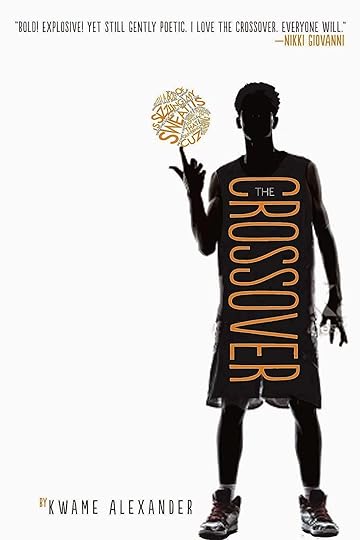 Josh Bell, aka Filthy McNasty, is a solid basketball player. His brother, Jordan, isn't too bad himself. The twin boys, both middle schoolers, have been playing for a long time. Their dad wasn't too bad a ball player himself back in the day either -- in fact, he played professionally and earned some good money and good jewelry. But he quit playing, and when Josh tries to broach the question about why his dad stopped and why his dad doesn't take up coaching, dad dodges the questions.
Josh Bell, aka Filthy McNasty, is a solid basketball player. His brother, Jordan, isn't too bad himself. The twin boys, both middle schoolers, have been playing for a long time. Their dad wasn't too bad a ball player himself back in the day either -- in fact, he played professionally and earned some good money and good jewelry. But he quit playing, and when Josh tries to broach the question about why his dad stopped and why his dad doesn't take up coaching, dad dodges the questions.On the surface, Kwame Alexander's verse novel The Crossover looks simple. It's about a boy and his brother who play basketball. But it's a much deeper, more complex novel about the challenges that exceptionally "average" characters can have. Josh is a relatable character, with two parents who are happily married. He and his brother get along. They're passionate about the game.
But things become more complex.
Josh and Jordan make a bet with one another relating to the game, and when Josh loses the bet, his brother has earned the privilege of cutting off one of his beloved locks. A misstep, though, leaves Josh with more than one lock cut, and the resulting look is something his mother isn't too happy with. She tells him that he'll have to cut them all off. He's not thrilled about it, but he goes along with it, and when he's sent to look for a box in which he can put those cut locks, he stumbles upon a box containing not just one of his father's precious rings from his time as a ball player, but he uncovers why his father quit the game. This revelation about his father opens up a whole new world to Josh and Jordan about their father and his deep-seeded fears.
As the season progresses, Jordan becomes enamored with a new girl at school. She reciprocates, and the two of them become boyfriend and girlfriend (in the way that middle schoolers are boyfriend and girlfriend -- there's no physical action and nothing happens on page here at all if there is). When this relationship begins to bud, suddenly Josh feels left out. His best friend and twin brother has entered into a new phase of life and a new experience that Josh hasn't. They spend less time together as a team and more time apart. It's a huge change for Josh, and at times, it comes across as jealousy and at other times, it comes across as grieving how his relationship with his brother once was.
There's more though. The little secret about their father's future in basketball was just the tip of what Josh discovers. As he's spending more time alone, he's been keeping an eye on his parents and learns that his dad hasn't been feeling well. In one instance, he fainted after not feeling well. While his mother keeps telling his dad to see a doctor, since his other father died young of heart disease, his father won't listen.
He's afraid of doctors.
Between explosive scenes on the court, rendered visually in the text, are the moments of quiet sadness and fear that linger in Josh's mind about his dad and the condition his dad may or may not be in. Spoiler: it's not good condition, and when the basketball season comes to its final game, one that's tense and important, Josh's dad's heart doesn't stay strong enough for him to witness it. The last few pages of this book are tough to read.
The Crossover makes exceptionally smart use of the verse format, without once feeling overdone or leaving the reader with the feeling a lot was lost because of the style. Alexander plays with the format visually in tense action scenes, and Josh's voice comes through. He loves rap and he plays around with rap himself, so the poetry and the beat of this story are authentic, natural, and memorable. This is the kind of story you'd read out loud because it lends itself to that. The speed and intensity of the game pair with the rhythm of the text.
The little details of this book stand out because of the format, and those little details tell us so much about Josh and the rest of his family. His mom is the assistant principal at his school, and he feels more pressure for himself and on the court because of that. Of course, dad's former role as a player doesn't help that. Both mom and dad are supportive in his and his brother's lives and in their passion for the game. Josh is also an average student, and even when things start getting tough for him, what's sacrificed is his behavior, not his intellect or his capacity to do well. Those behavioral changes are done in a way that make you want to hug him and tell him it's going to be all right. He's a great kid, with a great head on his shoulders, and passions that are worth pursuing.
Being that this book is about 7th graders, this "it's going to be all right" sentiment is important because it taps into what so many middle schoolers feel at that age. It's a rough transition period for even the most "average" kid. People are growing and changing in ways that do and don't make sense. What seems like a natural thing -- Josh's brother getting a girlfriend -- is something much more than that. It's a crisis of Josh's identity since he's no longer half of the Josh and Jordan pair. He's an entirely independent being, and being jolted into that awareness is tough because it's new.
Alexander's book falls into a weird area, though. This book is perfectly appropriate for middle grade readers, and it's also going to have appeal for both young YA readers and more reluctant YA readers. The challenge on that end, though, is that teens who read YA will likely be less willing to read about 7th graders than middle grade readers would be. I suspect The Crossover may fall between the cracks because of this, and I sure hope it doesn't. Alexander's book is about this "crossover" period, and it's going to speak deeply to teens (especially boys and especially black boys who don't see enough of themselves in realistic fiction) who are in that "crossover" period themselves. This is a book you sell to readers based on their maturity and interest, rather than on the grade or reading level they're at. The Crossover will make a great bridge to books like Matthew Quick's Boy21, too, both because of the content and the well-drawn, dynamic, and memorable characters.
You know exactly the kid who needs this book, who will fall in love with this book, and most important, who will see himself in this book. There is a gut punch at the end, but it's not a story without hope to it.
Pass this book along to those readers.
The Crossover is available now. Review copy picked up from the library.







 Related StoriesHispanic Heritage Month: A YA Reading ListAudio Review: Prisoner of Night and Fog by Anne BlankmanBelzhar by Meg Wolitzer
Related StoriesHispanic Heritage Month: A YA Reading ListAudio Review: Prisoner of Night and Fog by Anne BlankmanBelzhar by Meg Wolitzer
Published on October 05, 2014 22:00
October 2, 2014
This Week at Book Riot
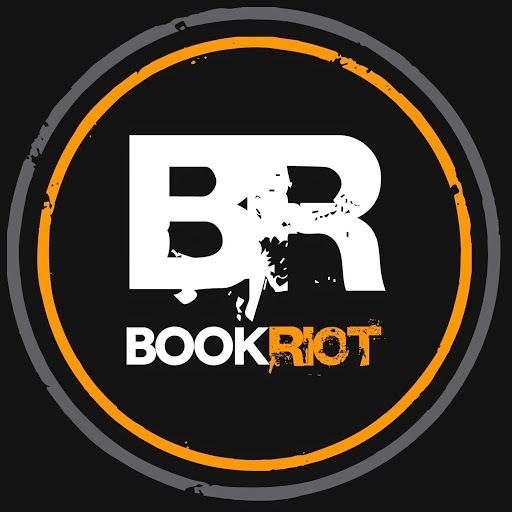
Here's a look at this week over at Book Riot...
I covered the monthly "5 Books to Watch For" post and highlighted a little bit of everything: some YA, some non-fiction, and some literary fiction. For this week's 3 On A YA Theme, three YA books that pay homage to Sylvia Plath.







 Related StoriesThis Week At Book RiotThis Week at Book Riot
Related StoriesThis Week At Book RiotThis Week at Book Riot
Published on October 02, 2014 22:00



